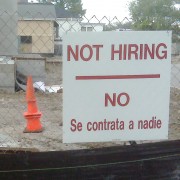4 Ways to Recognize and Address Employee Burnout
Employee burnout is a real phenomenon. And it’s the result of several different workplace environment contributors. As an employer today, you’re likely concerned about other similar dilemmas, including “quiet quitting” and turnover. There are steps you can be taking, however, as a business owner or HR manager, to reduce the risks of employee burnout. And these insights will also help you to identify burnout before it sets in altogether.
Understanding What Employee Burnout Really Is
Before jumping into identifying signs of employee burnout, it’s imperative that company leaders and human resources staff understand what it actually is and how it manifests. What are the signs and symptoms? Some work-related projects can lead to increased stress and exhaustion. But they don’t necessarily constitute employee burnout. These types of short-term bursts of work or projects can lead to burnout conditions. And roughly 75% of all employees have experienced burnout in these capacities.
However, in general, employee burnout describes an underlying or overarching series of contributing factors that leave employees feeling undervalued, overworked, overstressed, incapable of improvement, fatigued, or even depressed. Each individual’s experience is going to be unique, as is the worker’s threshold for making a change. But as an employer, you can spot warning signs early to then take action and recalibrate the employee experience.
Here are four ways to recognize and address employee burnout within your organization.
1. Employee Exhaustion
Start by evaluating your teams’ and their exhaustion levels. Are your front-line workers getting tired? Think back to the news reports of ER nurses and doctors during the pandemic. They were visibly and notably exhausted. If you suspect any members of your staff might be feeling the same level of tiredness with their roles, it’s a sign they’re headed for burnout.
If you suspect there is exhaustion among your ranks, you can take steps necessary to alleviate some of the stress and monotony associated with the various roles. Maybe consider augmenting the workforce or re-assigning duties wherever applicable. You can also explore changing up the workflow in a way that brings new perspectives and relief. Additionally, and especially if you suspect your teams routinely experience fatigue, introduce wellness initiatives or work-life balance policies that support time off, adequate break periods, and healthy lifestyles.
2. Disengagement & Isolation
Another indication that one or more of your employees is headed for certain burnout is a prolonged disengagement or isolation from others. If you spot an employee who used to be engaged and enthusiastic now becoming more silent or reclusive on the job, there’s likely a reason. And if left unaddressed, this isolation will lead to certain employee burnout.
To combat these instances, employers can look to team-building exercises and other engagement initiatives that encourage collaboration and support. These can be on and off-site activities. It’s also imperative that today’s organizations create and enforce a transparent communication policy that welcomes employees to HR to discuss concerns.
3. Absenteeism & Poor Productivity
Analyze the employee roster regularly to spot instances of repeated absenteeism. If you have staff members not reporting to work all of a sudden or more frequently, it could be because of employee burnout. This also leads to reduced productivity on the job. So, be mindful of those who might suddenly not be as interested in quality work performance; it could be they’re preparing to leave.
Coach your HR teams to connect with employees who might be suddenly absent more often or performing poorly when they used to be top producers. Routine and quarterly assessments and reviews can be helpful in starting conversations. And employers can also be diligent with anonymous surveys and polls to help collect sentiments and feedback.
4. Higher Sensitivity to Leadership & Feedback
The fourth sign you might have employee burnout on your hands is a behavioral shift in accepting direction and feedback. When employees are overburdened for lengths of time, they’ll be less likely to receive tasks and criticism. In fact, asking for more could exacerbate the issue even further. There could be short fuses or even instances of hostility if unaddressed.
If your organization establishes routine communication with its employees, you’ll create a flow of dialogue that helps you avoid employee burnout scenarios. Be transparent about your efforts to support your teams. Reach out and enforce guidelines of respect, health, and positivity in a way to cultivate a more responsive company culture.
Keep these insights about employee burnout in mind as you look for ways to improve your company culture and team productivity. And remember, you don’t have to do it alone. Today’s workplace dynamics are vastly different and require a different roadmap for success. Exact Hire can be your guide to leverage all the best practices for employee management, hiring, and onboarding in today’s landscape.








